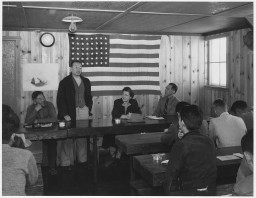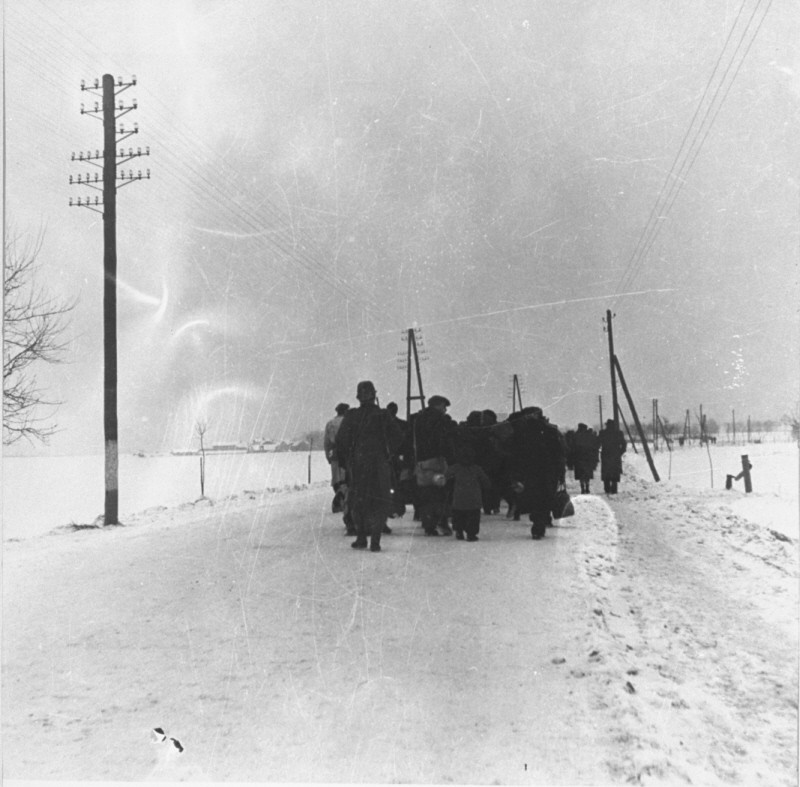
Photo
Browse an alphabetical list of photographs. These historical images portray people, places, and events before, during, and after World War II and the Holocaust.
<< Previous | Displaying results 51-99 of 140 for "Photo" | Next >>
-
The presentation of evidence about defendant Ernst Kaltenbrunner
PhotoThe presentation of evidence about defendant Ernst Kaltenbrunner at the International Military Tribunal trial of war criminals at Nuremberg. Germany, January 2, 1946. Ernst Kaltenbrunner (1903–1946) was Chief of the Reich Security Main Office (RSHA) and later Chief of the Security Police. In this second position, Kaltenbrunner controlled the Gestapo (German Secret State Police), Criminal Police, and Security Service (SD). He was a prime figure in the “Final Solution” in the last years of the war.
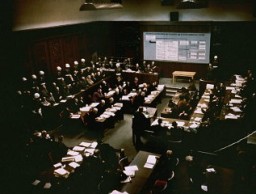
-
The Prinzregenten Street synagogue after Kristallnacht
PhotoView of the Prinzregenten Street synagogue. It was destroyed by fire during the Kristallnacht ("Night of Broken Glass") pogrom. Berlin, Germany, November 9-10, 1938.
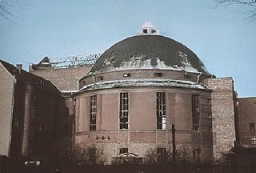
-
The prosecution introduces documents at the International Military Tribunal
PhotoThe defendants listen as the prosecution begins introducing documents at the International Military Tribunal trial of war criminals at Nuremberg. November 22, 1945.
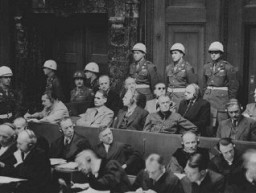
-
The prosecution opens its case at the IG Farben Trial
PhotoUS Chief of Counsel Brigadier General Telford Taylor (standing at center podium) opens the prosecution's case at the IG Farben Trial. Note the camera in the corner of the room. August 27, 1947.
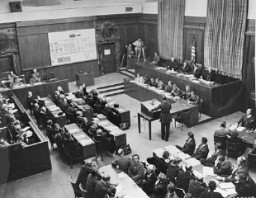
-
The prosecution team at the trial of Adolf Eichmann
PhotoThe prosecution team, including chief prosecutor and attorney general Gideon Hausner (bottom left), during Adolf Eichmann's trial. Jerusalem, Israel, May 30, 1961.
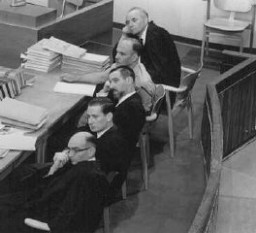
-
The prosecution team during the Doctors Trial
PhotoThe prosecution team during the Doctors' Trial. Nuremberg, Germany, December 9, 1946-August 20, 1947.
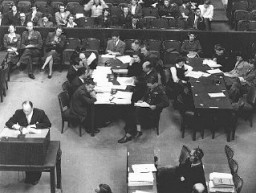
-
The quarry of the Mauthausen concentration camp
PhotoThe Wiener Graben quarry of the Mauthausen concentration camp. Austria, photograph taken after the liberation of the camp.
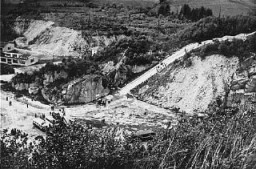
-
The refugee ship Pentcho
PhotoThis photograph shows the refugee ship Pentcho, carrying over 500 passengers bound for Palestine, sailing in the Aegean Sea. It had departed from Bratislava on May 18, 1940. In October 1940, while the Pentcho was sailing in Italian territory, its boiler exploded. The passengers and crew were able to get ashore and offload their supplies before the ship finally sank. On October 18 and 19, Italian authorities picked up the refugees and took them to Rhodes. They stayed there for over a year in a…
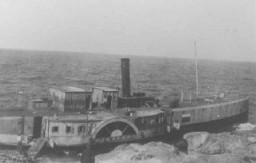
-
The Rudnicki Street entrance to the Vilna ghetto
PhotoThis photograph shows the Rudnicki Street entrance to the Vilna ghetto. The signs on the fence claim there is danger of contagion and prohibit the bringing of food or wood into the ghetto. Photograph taken in 1941–42.
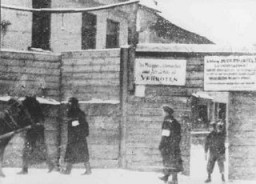
-
The Soviet prosecution team at the International Military Tribunal
PhotoThe Soviet prosecution team at the International Military Tribunal. Each of the four Allied countries—the United States, Great Britain, France, and the Soviet Union—was represented by a judge and a team of prosecuting attorneys.
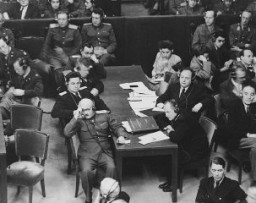
-
The St. Louis in the port of Hamburg
PhotoThe St. Louis, carrying more than 900 Jewish refugees, waits in the port of Hamburg. The Cuban government denied the passengers entry. Hamburg, Germany, 1939.
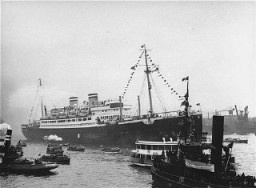
-
The "Tehran Children" after arrival in Palestine
PhotoA group of Polish Jewish refugee children known as the "Tehran Children" after their arrival in Palestine. Atlit, Palestine, February 18, 1943.
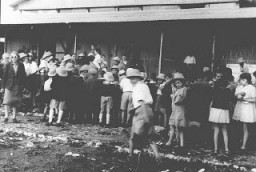
-
The "Tehran Children" arrive in Palestine via Iran
PhotoA group of Polish Jewish refugee children (known as the "Tehran Children") arrives in Palestine via Iran. Atlit reception camp, Palestine, February 18, 1943.
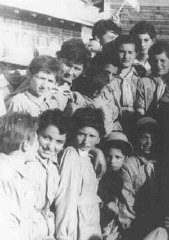
-
"The Three Musketeers"
PhotoPhotograph of "The Three Musketeers" —three school friends in the Lodz ghetto. Left: Lola Tenenbaum Rapoport, who survived with her husband. Center: Niusia Friedman, who was killed in Auschwitz. Lola sent this photo to Blanka Rothschild from Australia. Blanka (right) says "It's my only memento of the ghetto." With the end of World War II and collapse of the Nazi regime, survivors of the Holocaust faced the daunting task of rebuilding their lives. With little in the way of financial resources and few, if…
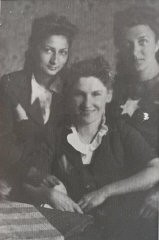
-
The title page of Mein Kampf by Adolf Hitler
PhotoThe title page of Mein Kampf by Adolf Hitler. This copy has an inscription by Hitler on the inside cover (not shown) that reads "To the Newlyweds with best wishes for a happy and blessed marriage." Munich, Germany, 1941.
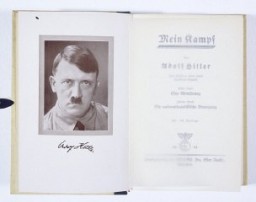
-
The UN Diplomatic Conference on the establishment of an International Criminal Court
PhotoThe United Nations Diplomatic Conference of Plenipotentiaries on the Establishment of an International Criminal Court opened a five week session on June 15, 1998, in Rome, Italy.
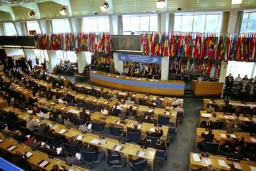
-
The Warsaw ghetto Jewish council
PhotoA meeting of the Warsaw ghetto Jewish council. Sitting behind table, 2nd to 4th from left: industrialist Abraham Gepner; chairman Adam Czerniakow; and lawyer Gustav Wielikowski. Warsaw, Poland, between 1939 and 1942.
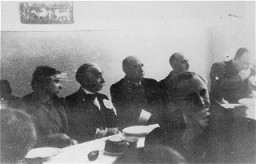
-
The Weinberger children in Munkacs
PhotoThe Weinberger children pose for a photograph. Munkacs, 1940.
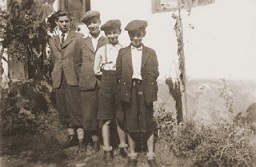
-
The Westerbork camp
PhotoA view of the Westerbork camp, the Netherlands, between 1940 and 1945. From 1942 to 1944 Westerbork served as a transit camp for Dutch Jews before they were deported to killing centers in German-occupied Poland.
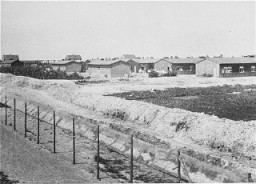
-
The Wöbbelin camp
PhotoThe fenced perimeter and an entrance to the women's camp at Wöbbelin. Photograph taken May 4–6, 1945.
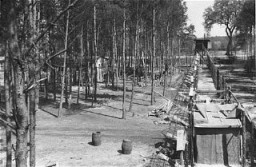
-
Theo Markus Verderber
PhotoTheo Markus Verderber's mother, Gelle, was among the Jews of Polish nationality expelled from Germany in October 1938. Theo and his younger brother were born in Germany, but went with their mother to a refugee camp in the border town of Zbaszyn. Hungry and cold, the refugees were stranded on the border, unwelcome in either Germany or Poland. Theo was ultimately chosen to join a Kindertransport to England, arriving there in February 1939. His mother, sister and youngest brother remained in…
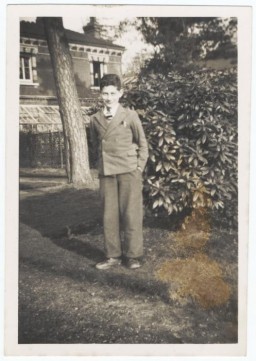
-
Third meeting of the War Refugee Board
PhotoThird meeting of the board of directors of the War Refugee Board. From the left are Secretary of State Cordell Hull, Treasury Secretary Henry Morgenthau, Secretary of War Henry Stimson, and Executive Director John Pehle. Washington, DC, United States, March 21, 1944.
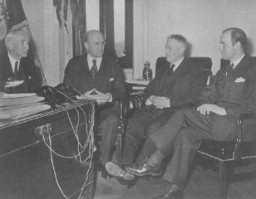
-
Thomas as a law student
PhotoThomas Buergenthal as a law student, 1959–60. With the end of World War II and collapse of the Nazi regime, survivors of the Holocaust faced the daunting task of rebuilding their lives. With little in the way of financial resources and few, if any, surviving family members, most eventually emigrated from Europe to start their lives again. Between 1945 and 1952, more than 80,000 Holocaust survivors immigrated to the United States. Thomas was one of them.
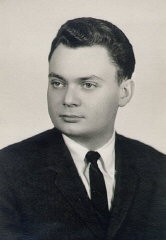
-
Thomas at age 13 months
PhotoThomas at age 13 months with his father, Mundek Buergenthal. Czechoslovakia, June 1935.
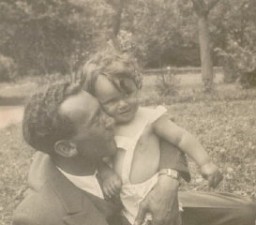
-
Thomas Buergenthal after arriving in the United States
PhotoThomas (standing, right), then known as "Tommy," with relatives shortly after arriving in the United States. New Jersey, ca. 1952. With the end of World War II and collapse of the Nazi regime, survivors of the Holocaust faced the daunting task of rebuilding their lives. With little in the way of financial resources and few, if any, surviving family members, most eventually emigrated from Europe to start their lives again. Between 1945 and 1952, more than 80,000 Holocaust survivors immigrated to the United…
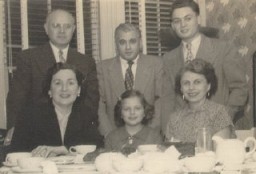
-
Thomas Buergenthal at Auschwitz in 1995
PhotoThomas Buergenthal at Auschwitz in 1995, fifty years to the day after his forced march out of the camp as a child. Poland, 1995. With the end of World War II and collapse of the Nazi regime, survivors of the Holocaust faced the daunting task of rebuilding their lives. With little in the way of financial resources and few, if any, surviving family members, most eventually emigrated from Europe to start their lives again. Between 1945 and 1952, more than 80,000 Holocaust survivors immigrated to the United…
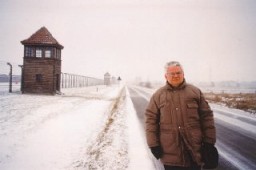
-
Thomas Buergenthal at New York University
PhotoThomas Buergenthal as a student at New York University, 1957–60. With the end of World War II and collapse of the Nazi regime, survivors of the Holocaust faced the daunting task of rebuilding their lives. With little in the way of financial resources and few, if any, surviving family members, most eventually emigrated from Europe to start their lives again. Between 1945 and 1952, more than 80,000 Holocaust survivors immigrated to the United States. Thomas was one of them.
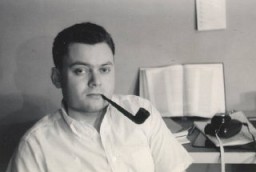
-
Thomas Buergenthal with one of his grandchildren
PhotoThomas with Eliza, one of his grandchildren. 1996. With the end of World War II and collapse of the Nazi regime, survivors of the Holocaust faced the daunting task of rebuilding their lives. With little in the way of financial resources and few, if any, surviving family members, most eventually emigrated from Europe to start their lives again. Between 1945 and 1952, more than 80,000 Holocaust survivors immigrated to the United States. Thomas was one of them.
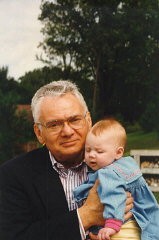
-
Thomas Buergenthal with his first wife, Dorothy
PhotoThomas with his first wife, Dorothy, at the Zeta Tau Alpha Spring Formal, 1957. With the end of World War II and collapse of the Nazi regime, survivors of the Holocaust faced the daunting task of rebuilding their lives. With little in the way of financial resources and few, if any, surviving family members, most eventually emigrated from Europe to start their lives again. Between 1945 and 1952, more than 80,000 Holocaust survivors immigrated to the United States. Thomas was one of them.
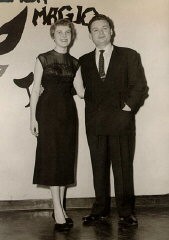
-
Thomas Buergenthal with his mother, Gerda, in Goettingen
PhotoThomas Buergenthal with his mother, Gerda, in Goettingen, Germany, 1950. With the end of World War II and collapse of the Nazi regime, survivors of the Holocaust faced the daunting task of rebuilding their lives. With little in the way of financial resources and few, if any, surviving family members, most eventually emigrated from Europe to start their lives again. Between 1945 and 1952, more than 80,000 Holocaust survivors immigrated to the United States. Thomas was one of them.
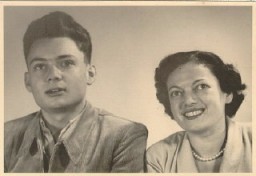
-
Thomas Buergenthal with the soldier who realized that Thomas was Jewish and took him to an orphanage
PhotoThomas (left), 6 months after liberation, with a soldier who realized that Thomas was Jewish and took him to an orphanage, ca. 1945. Thomas was eventually reunited with his mother. With the end of World War II and collapse of the Nazi regime, survivors of the Holocaust faced the daunting task of rebuilding their lives. With little in the way of financial resources and few, if any, surviving family members, most eventually emigrated from Europe to start their lives again. Between 1945 and 1952, more than…
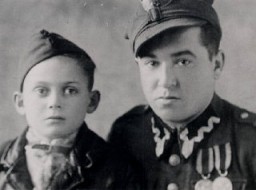
-
Thomas in his toy car
PhotoPhotograph of a young Thomas Buergenthal posing in his toy car as his mother sits alongside. 1936.
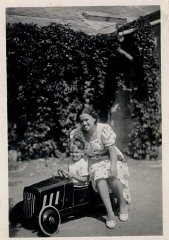
-
Thomas with his mother, Gerda, before Thomas's departure for the United States
PhotoThomas Buergenthal with his mother, Gerda, before Thomas's departure for the United States. Bad Neuheim, Germany, summer 1951. With the end of World War II and collapse of the Nazi regime, survivors of the Holocaust faced the daunting task of rebuilding their lives. With little in the way of financial resources and few, if any, surviving family members, most eventually emigrated from Europe to start their lives again. Between 1945 and 1952, more than 80,000 Holocaust survivors immigrated to the United…
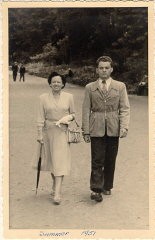
-
Thomas's parents, Mundek and Gerda
PhotoThomas Buergenthal's parents, Mundek and Gerda (b. 1912). Czechoslovakia, 1933 or 1934. With the end of World War II and collapse of the Nazi regime, survivors of the Holocaust faced the daunting task of rebuilding their lives. With little in the way of financial resources and few, if any, surviving family members, most eventually emigrated from Europe to start their lives again. Between 1945 and 1952, more than 80,000 Holocaust survivors immigrated to the United States. Thomas was one of them.
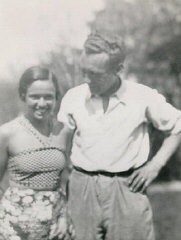
-
Thomas's three sons and granddaughter
PhotoThomas Buergenthal's three sons, Robert, John (holding daughter Eliza), and Alan. 1996. With the end of World War II and collapse of the Nazi regime, survivors of the Holocaust faced the daunting task of rebuilding their lives. With little in the way of financial resources and few, if any, surviving family members, most eventually emigrated from Europe to start their lives again. Between 1945 and 1952, more than 80,000 Holocaust survivors immigrated to the United States. Thomas was one of them.
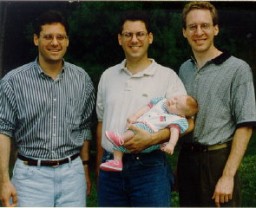
-
Thracian Jews aboard a ship during deportation
PhotoThracian Jews crowd the upper deck of the Karađorđe, a ship used for deportation, as it leaves the port of Lom. They were transported by ship along the Danube River to Vienna and then by rail to the Treblinka killing center in occupied Poland. Lom, Bulgaria, March 1943.
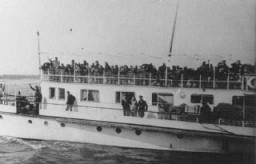
-
Thracian Jews crowded onto a ship used for deportations
PhotoThracian Jews crowded into an interior room of the Karađorđe, used as a deportation ship, just before it left the Danube River port of Lom. From Lom they were loaded onto four Bulgarian ships and taken to Vienna, where they were put on trains bound for the Treblinka killing center in occupied Poland. Lom, Bulgaria, March 1943.
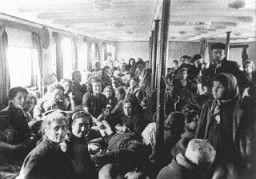
-
Three generations of a Jewish family pose for a group photograph
PhotoThree generations of a Jewish family pose for a group photograph. Vilna, 1938-39. The photo was taken during daughter Mina's visit from Montreal. Among those pictured are Mina (Katz) Herman and her daughter, Audrey (front row, second from the right), Itzik Katz, Mina's brother (standing at the far left) and Malka Katz, Mina's mother (front row, center).
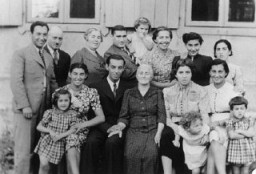
-
Three German mayors view the body of a victim of a death march
PhotoThree German mayors view the corpse of a prisoner burned alive in a barn by the SS while on a death march from Rottleberode, a subcamp of Dora-Mittelbau. Gardelegen, Germany, April 18, 1945.
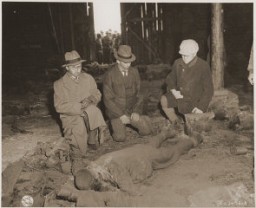
-
Three Jewish partisans
PhotoThree Jewish partisans in the Wyszkow Forest near Warsaw. Poland, between 1943–44.
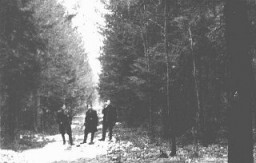
-
Three participants in the Treblinka uprising
PhotoThree participants in the Treblinka uprising who escaped and survived the war. Photograph taken in Warsaw, Poland, 1945. Pictured from left to right are: Abraham Kolski, Lachman and Brenner. After participating in the Treblinka uprising, they escaped from the camp and found temporary refuge in the nearby forest. Afterwards they hid with a Christian family until liberation.
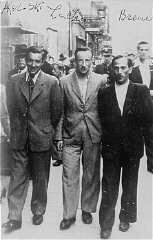
-
Three-year-old Thomas Buergenthal with his parents
PhotoThree-year-old Thomas Buergenthal with his parents, Mundek and Gerda. Czechoslovakia, June 1937. With the end of World War II and collapse of the Nazi regime, survivors of the Holocaust faced the daunting task of rebuilding their lives. With little in the way of financial resources and few, if any, surviving family members, most eventually emigrated from Europe to start their lives again. Between 1945 and 1952, more than 80,000 Holocaust survivors immigrated to the United States. Thomas was one of them.
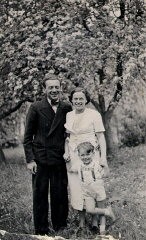
-
Three-year-old Thomas during a stay at a hotel in Czechoslovakia
PhotoThree-year-old Thomas Buergenthal during a stay at a hotel in Czechoslovakia, 1937. With the end of World War II and collapse of the Nazi regime, survivors of the Holocaust faced the daunting task of rebuilding their lives. With little in the way of financial resources and few, if any, surviving family members, most eventually emigrated from Europe to start their lives again. Between 1945 and 1952, more than 80,000 Holocaust survivors immigrated to the United States. Thomas was one of them.
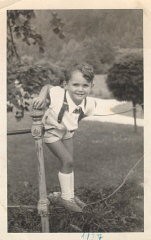
-
Théophile Larue
PhotoFrench policeman Théophile Larue, who warned his Jewish neighbors of an upcoming roundup.
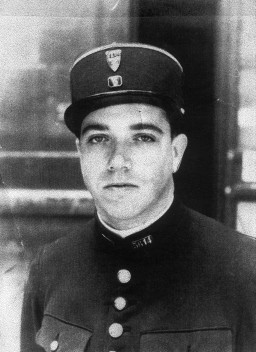
-
Ticket for an opera performed in Theresienstadt
PhotoStanding room ticket for an opera performed on April 21, 1945, in the Theresienstadt ghetto.
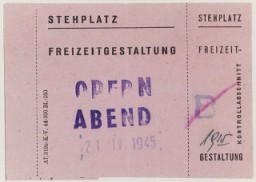
-
Tom and Wolf Stein in costumes for Purim
PhotoTom (left) and Wolf Stein (right), dressed in Turkish-style costumes, attend a party celebrating the Jewish holiday of Purim. Hamburg, Germany, 1936.
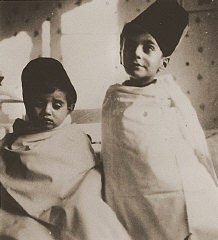
-
Torchlight parade in honor of Hitler's appointment as chancellor
PhotoFrom a window in the Reich Chancellery, German president Paul von Hindenburg watches a Nazi torchlight parade in honor of Adolf Hitler's appointment as German Chancellor. Berlin, Germany, January 30, 1933.
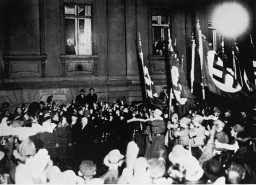
-
Torchlight parade in honor of Hitler's appointment as chancellor
PhotoAdolf Hitler, Wilhelm Frick, and Hermann Göring wave to a torchlight parade in honor of Hitler's appointment as chancellor. Behind Göring stands Rudolf Hess. Berlin, Germany, January 30, 1933.
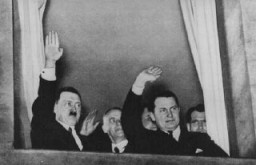
-
Town hall meeting at the Manzanar Relocation Center
PhotoJapanese Americans hold a town hall meeting at the Manzanar Relocation Center in California, 1943.
